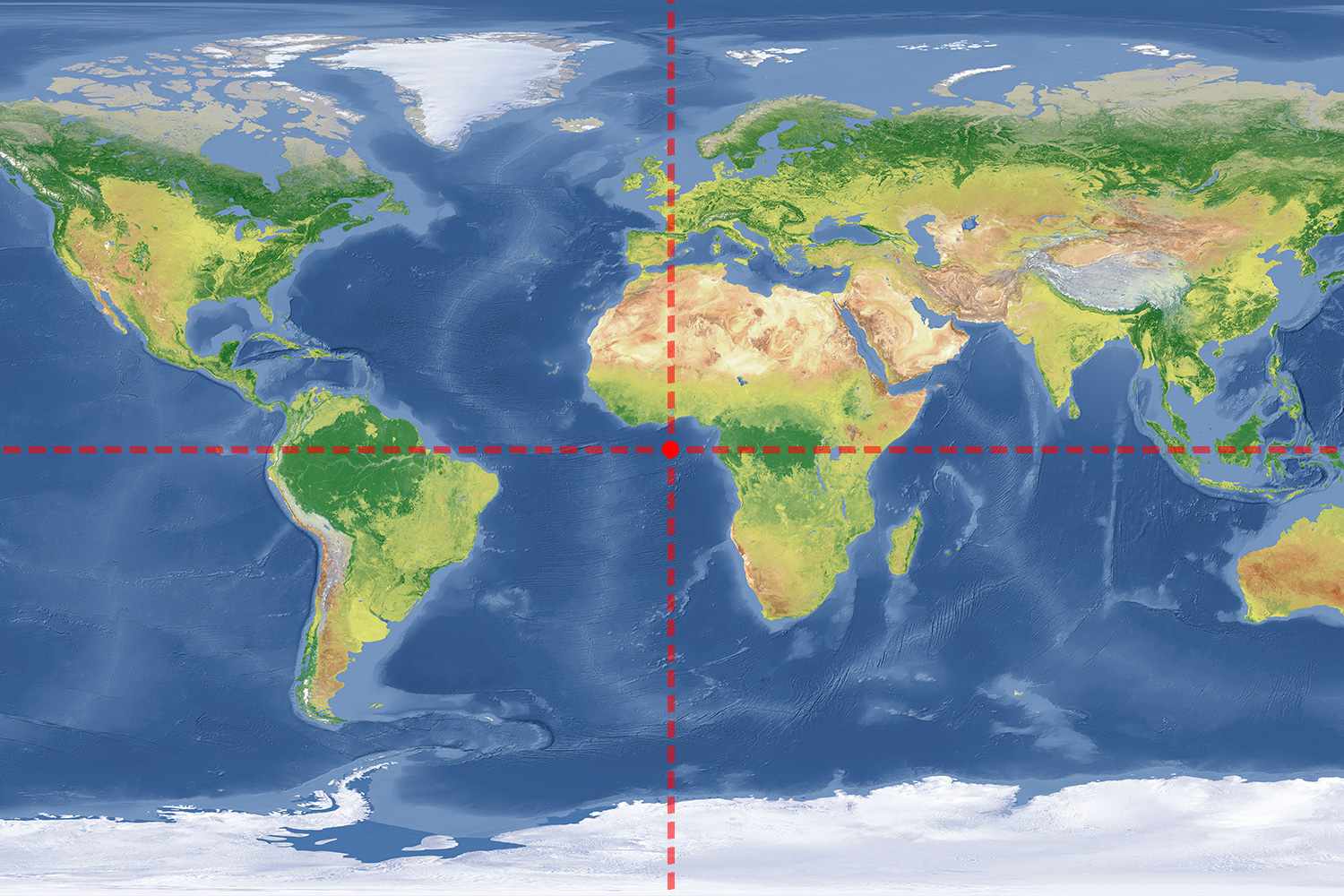
The Equator is one of the most fascinating geographical lines on our planet. Stretching around the Earth’s middle, it is an imaginary line that divides the world into two equal halves – the Northern Hemisphere and the Southern Hemisphere. While most people are familiar with the concept of the Equator, there are many surprising facts that are lesser-known. From the impact on climate and weather patterns to its effect on gravity and wildlife, the Equator plays a significant role in shaping our planet. In this article, we will explore 14 surprising facts about the Equator that will intrigue and amaze you. So, let’s dive into the extraordinary world of the Equator and uncover some of its hidden secrets.
Key Takeaways:
- The Equator is an imaginary line dividing the Earth, experiencing consistent daylight and hosting diverse wildlife, making it a hot spot for tourists and scientific research.
- The Equator influences climate, navigation, and space launches, and divides the world into hemispheres, but it’s not a fixed line due to Earth’s changes.
The Equator is an imaginary line.
The Equator is a line that runs around the middle of the Earth, dividing it into the Northern and Southern Hemispheres. It is an imaginary line because it does not physically exist and can only be located using geographic coordinates.
The Equator is approximately 40,075 kilometers long.
The Equator forms a circle around the Earth and is the longest line of latitude. It measures about 40,075 kilometers (24,901 miles) in length.
The Equator experiences consistent daylight all year round.
Due to its location in the middle of the Earth, the Equator experiences nearly equal amounts of daylight throughout the year. This means that the length of daylight and darkness remains relatively constant, resulting in a consistent climate and weather patterns.
The Equator is the hottest spot on Earth.
Due to its direct exposure to the sun’s rays, the Equator experiences high temperatures year-round. The combination of consistent daylight and proximity to the sun makes it the hottest spot on Earth.
The Equator has a rich biodiversity.
The Equator passes through several countries and regions known for their diverse ecosystems. It is home to lush rainforests, vibrant coral reefs, and a wide array of plant and animal species.
The Equator is a significant navigation reference.
Since the Equator divides the Earth into two hemispheres, it serves as an important reference point for navigation and map-making. It helps in determining latitudes and is essential for accurate positioning and direction.
The Equator experiences very little change in seasons.
Unlike regions closer to the poles, the Equator experiences minimal changes in seasons. The climate remains relatively stable throughout the year, with only slight variations in temperature and weather patterns.
The Equator is a popular tourist destination.
Many travelers flock to countries situated along the Equator to experience its unique climate and diverse wildlife. Countries such as Ecuador, Kenya, and Indonesia offer visitors the chance to explore tropical rainforests, go on wildlife safaris, and enjoy breathtaking natural wonders.
The Equator has its own unique physical phenomenon.
Being an area with intense sunlight and high temperatures, the Equator experiences specific physical phenomena such as the Coriolis effect and the intertropical convergence zone. These phenomena play a significant role in weather patterns and ocean currents around the world.
The Equator is an important scientific research area.
Scientists and researchers conduct various studies along the Equator to better understand climate change, biodiversity, and the Earth’s natural processes. The Equator provides valuable insights into tropical ecosystems and their response to environmental changes.
The Equator influences the length of a day and night.
Due to its position on the Earth, the Equator influences the length of a day and night in different regions of the world. The closer a location is to the Equator, the more consistent the length of day and night throughout the year.
The Equator is a popular location for space launches.
Equatorial regions, such as the Guiana Space Center in French Guiana, are favorable for space launches due to the Earth’s rotation. Spacecraft launched near the Equator can take advantage of the Earth’s spin to gain extra speed and reduce the fuel required for orbit.
The Equator divides the world into the Eastern and Western Hemispheres.
The Equator acts as the dividing line between the Eastern Hemisphere and the Western Hemisphere. Countries situated to the east of the Equator are considered part of the Eastern Hemisphere, while those to the west are part of the Western Hemisphere.
The Equator is not a fixed line.
Due to various factors such as tectonic plate movements and Earth’s rotational changes, the Equator is not a fixed line. Its position can shift over time, although these changes are relatively small and occur over long periods.
Conclusion
The equator is an incredible geographic feature that holds many surprising facts. From its role in determining seasons to its impact on our everyday lives, the equator is a fascinating line that divides the Earth into two hemispheres. Exploring the equator and its unique characteristics can deepen our understanding of our planet and the forces that shape it. Whether it’s the diverse ecosystems found along the equatorial region or the gravitational changes experienced at this latitude, the equator offers a wealth of incredible phenomena to explore. So next time you find yourself near the equator, take a moment to appreciate its significance and marvel at the wonders it holds.
FAQs
1. What exactly is the equator?
The equator is an imaginary line that divides the Earth into two equal halves: the northern hemisphere and the southern hemisphere.
2. How does the equator affect the climate?
The equator plays a crucial role in determining the climate patterns on Earth. It experiences consistently high temperatures due to direct sunlight, creating a tropical climate and influencing weather systems around the globe.
3. Are there any ecosystems unique to the equator?
Yes, the equator is home to several unique ecosystems, including rainforests, coral reefs, and mangrove forests. These areas flourish due to the abundance of sunlight and constant warmth.
4. What is the significance of the equator to navigation?
The equator serves as a reference point for navigational purposes. It helps determine latitude and assists in finding the shortest distance between two points on the globe.
5. Does gravity differ on the equator compared to other areas?
Yes, due to the centrifugal force caused by the Earth’s rotation, gravity is slightly weaker at the equator compared to the poles.
6. Are there any countries that the equator passes through?
Yes, the equator passes through 13 countries, including Ecuador, Brazil, Indonesia, and Kenya.
7. Can you really balance an egg on the equator during the equinox?
Contrary to popular belief, balancing an egg on the equator during the equinox is not related to any gravitational force. It is simply a myth and has no basis in scientific fact.
Was this page helpful?
Our commitment to delivering trustworthy and engaging content is at the heart of what we do. Each fact on our site is contributed by real users like you, bringing a wealth of diverse insights and information. To ensure the highest standards of accuracy and reliability, our dedicated editors meticulously review each submission. This process guarantees that the facts we share are not only fascinating but also credible. Trust in our commitment to quality and authenticity as you explore and learn with us.


